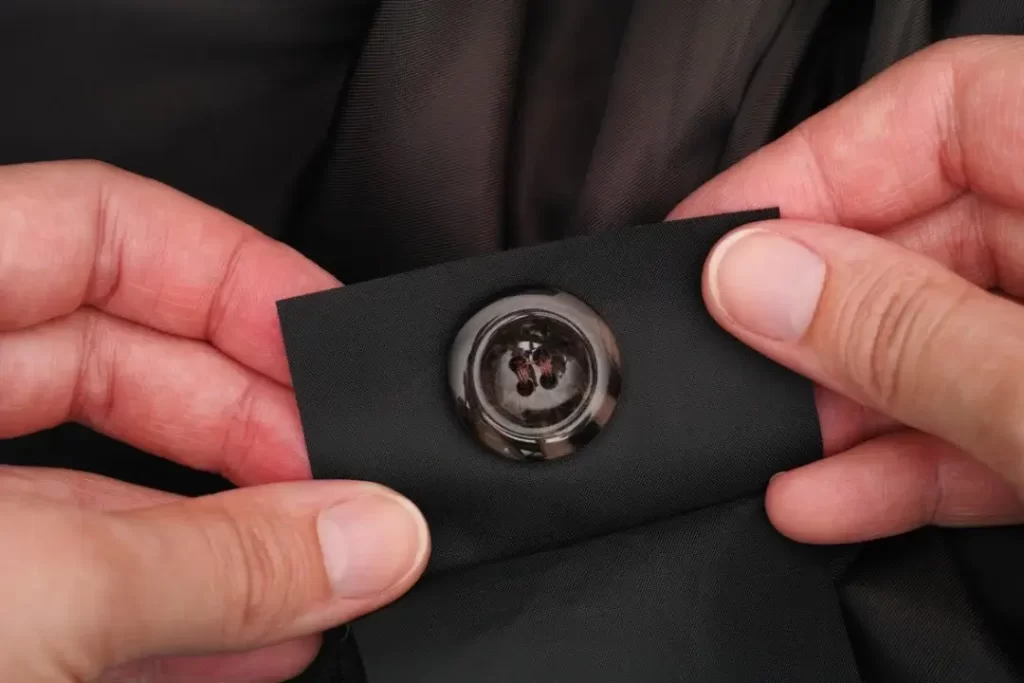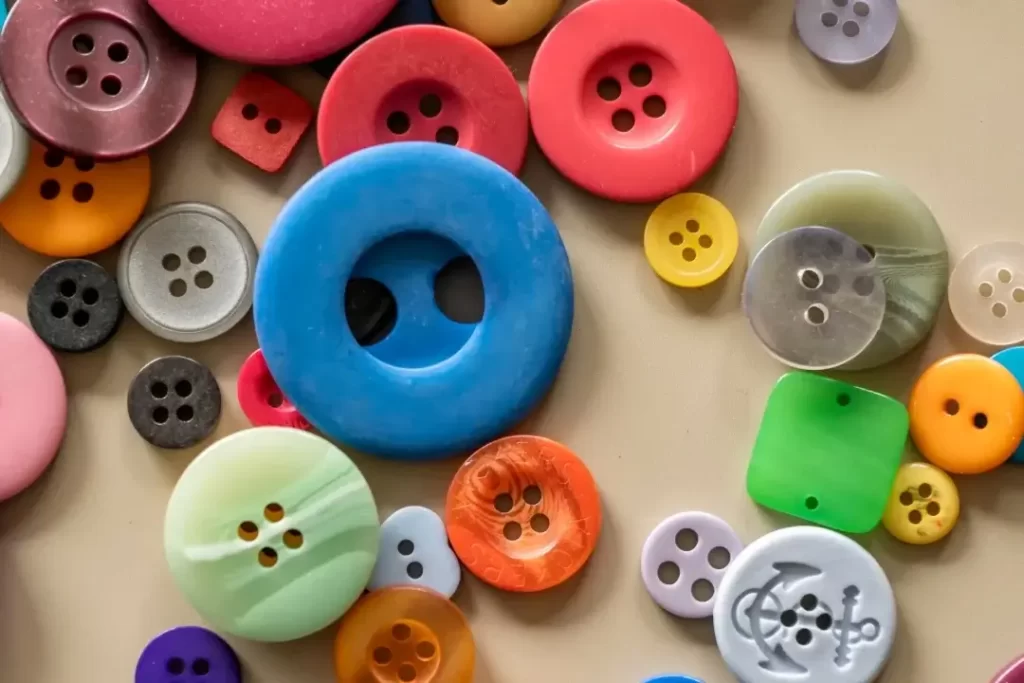
Why Clothing Brands Fail
Top Different Types of Shirts for Women and Men Top Different Types of Shirts for
Dive into the diverse array of Types of Buttons and uncover fashion's secret sauce. Learn how they enliven clothing designs for a truly irresistible appeal
Could you imagine a world without buttons? How would our clothing designs look without these small yet essential components? Since the early civilizations, buttons have held a special place in the world of garments. From the simple fastenings found in ancient Rome and China to the modern, there are versatile types of buttons used today, they’ve come a long way in shaping the fashion industry.
Buttons aren’t just decorative – they’re a fundamental part of most designs, influencing a garment’s functionality and overall aesthetics. The right choice of a button can make or break the final look of an outfit, adding that special touch of uniqueness and style.

With countless buttons available, selecting the perfect one might seem overwhelming. Fear not, for in this in-depth guide, we shall explore the many types of buttons for clothes that adorn our clothing and garments. Now let’s dive into the fascinating world of buttons and what makes them an essential part of our wardrobes!

Flat buttons, as the name suggests, have a flat surface suitable for a wide range of clothing items. They can have two, three, or four holes for attaching to fabric with thread. Their simple and versatile design has made them popular for centuries.
Pros:
Cons:
Plastic, resin, metal, shell, glass, and wood are commonly used materials for flat buttons, each with unique characteristics that can contribute to the look and feel of a garment.
These types of buttons have a hollow protrusion or shank at the back, through which a thread passes to attach it to the fabric. Perfect for thicker materials, these buttons offer a more stable and raised attachment than flat buttons.
Shank buttons are commonly used in coats, jeans, and upholstery applications, given their sturdy structure.
Pros:
Cons:
Metal, plastic, resin, glass, wood, and ceramic are some of the materials that can be used to make shank buttons, providing a range of styles and design options.
Stud buttons, also known as snap or press buttons, are two-part buttons that snap together to fasten. They are versatile fasteners that can be discreetly hidden or feature prominent designs.
Stud buttons are often used in children’s clothing, as they simplify garment fastening. They can also be found in denim, sportswear, and Western-style clothing.
Pros :
Cons:
Metal (such as brass, nickel or stainless steel), plastic and resin are common stud button materials, each offering different aesthetics and levels of durability.
Toggle buttons, also called toggle clasps or duffle buttons, consist of a cylindrical or oval-shaped component (often made of wood or bone) and a cord loop. They work by securing the toggle through the loop and fastening the garment.
These types of buttons are typically used for coats, jackets, duffle bags, and other heavy outerwear, as they provide a secure and easy-to-use fastening solution.
Pros:
Cons:
Wood, bone, horn, plastic, and metals are popular materials for toggle buttons, each presenting its own unique look and feel.
Decorative buttons, as the name implies, are ornamental by design and serve as both a functional fastener and a fashionable embellishment on clothing and accessories. These types of buttons come in various shapes, sizes, and materials, often featuring intricate designs or unique details.
Decorative buttons are popular in formal wear, costumes, cultural garments, and unique fashion statements, adding visual interest and detail to the attire.
Pros:
Cons:
Glass, metal, ceramics, gemstones, wood, and shell are among the many materials that can be used to create decorative buttons, each offering a different aesthetic and texture to the embellishment.
Covered buttons are made with a regular button, typically a flat or shank style, wrapped in fabric that matches or complements the garment. They add a seamless and somewhat hidden fastening solution to clothing items.
Covered buttons are frequently used in wedding gowns, formal wear, and tailored pieces where a more discreet or polished appearance is desired.
Pros:
Cons:
Eco-friendly buttons are fasteners made from sustainable, natural, or recycled materials with the purpose of reducing environmental impact. These types of buttons promote a greener, more environmentally conscious approach to clothing design and production.
Eco-friendly buttons can be applied to a wide range of garments, particularly those focused on sustainable and ethical fashion. They are also ideal for environmentally conscious businesses, targeting customers who emphasize green practices.
Pros:
Cons:
Organic and natural materials such as wood, coconut, bamboo, corozo (tagua nut), and recycled materials (like metal, glass, and plastic) are commonly used for creating eco-friendly buttons, depending on their purpose and desired appearance.
These types of buttons, also known as magnetic clasps or magnetic snaps, consist of two magnetized parts that attach together to secure a garment quickly and easily. They are hidden under the fabric and create a clean and modern look.
Magnetic buttons are ideal for use in children’s clothing, adaptive clothing for those with limited dexterity, bags, and accessories where quick and easy fastening is necessary.
Pros:
Cons:
Magnetic buttons usually consist of two magnets, which can be made from various materials, such as neodymium, alnico, or ceramic magnets. The magnets can be encased in or attached to metal or plastic components to facilitate their fastening and positioning.
Zippers, also known as zip fasteners, consist of two parallel strips of teeth, fabric tape, and a slider mechanism that interlocks the teeth when pulled together. Available in various lengths, styles, and materials, zippers provide a quick and efficient method of fastening clothing, accessories, and other items.
Zippers are often found on outerwear, such as jackets or coats, pants, dresses, skirts, bags, and even footwear, providing easy and adjustable closures.
Pros:
Cons:
Zippers can be made from various materials, including metal (such as brass, aluminum, or nickel), plastic, and even polyester fabric or taping. Each material offers different levels of durability, aesthetics, and functionality, depending on the specific needs of the project.
Velcro, also known as hook-and-loop fasteners, is a type of quick fastening system composed of two strips: one with tiny hooks and the other with loops. When pressed together, they attach securely, can hold heavy weight for a brief period, and be easily separated by pulling the strips apart. Velcro provides a versatile, adjustable, and easy-to-use fastening solution for various applications.
Velcro is commonly used in children’s clothing, sports apparel, footwear, medical braces, and various accessories like bags, wallets, or even home décor items.
Pros:
Cons:
Velcro is typically made from synthetic materials, such as nylon, polyester, or a combination of both. The hook and loop components can be mounted on various backings, like fabric or adhesive strips, to suit different applications and requirements.
In conclusion, buttons and fasteners play an essential role in everyday life, serving not just a functional purpose but also showcasing creativity and individuality. With such an impressive array of types, materials, and designs available, choosing the right types of buttons for your specific needs is not only a practical decision but also an opportunity to express your personality and artistic flair.
If you want to learn more about buttons Click here.
Yes, you can explore options like natural elements such as wood or coconut shell and even recycled materials like reclaimed metals or recycled plastics when looking for eco-friendly alternatives to traditional metal and plastic buttons.
Magnetic buttons have the potential to interfere with electronic devices or medical devices like pacemakers when placed too close to them. Exercise caution while using magnetic buttons in proximity to sensitive electronics.
In addition to traditional buttons, there are various fastening alternatives like zippers, Velcro, snaps, and other unique solutions that may add a more innovative or functional touch to your project.
Expert Custom Clothing Manufcaturer

Top Different Types of Shirts for Women and Men Top Different Types of Shirts for

What You Must Know About Clothing Samples? Before You Produce a Single Garment: What You

How Much Does It Cost To Make a Hoodie A Complete Cost Breakdown for Custom

Discover the Types of Buttons Discover the Types of Buttons That Transform Style and Functionality
Most Recent Posts
Expert Custom Clothing Manufcaturer
Join our Mailing list!
Get all latest news, exclusive deals and updates.